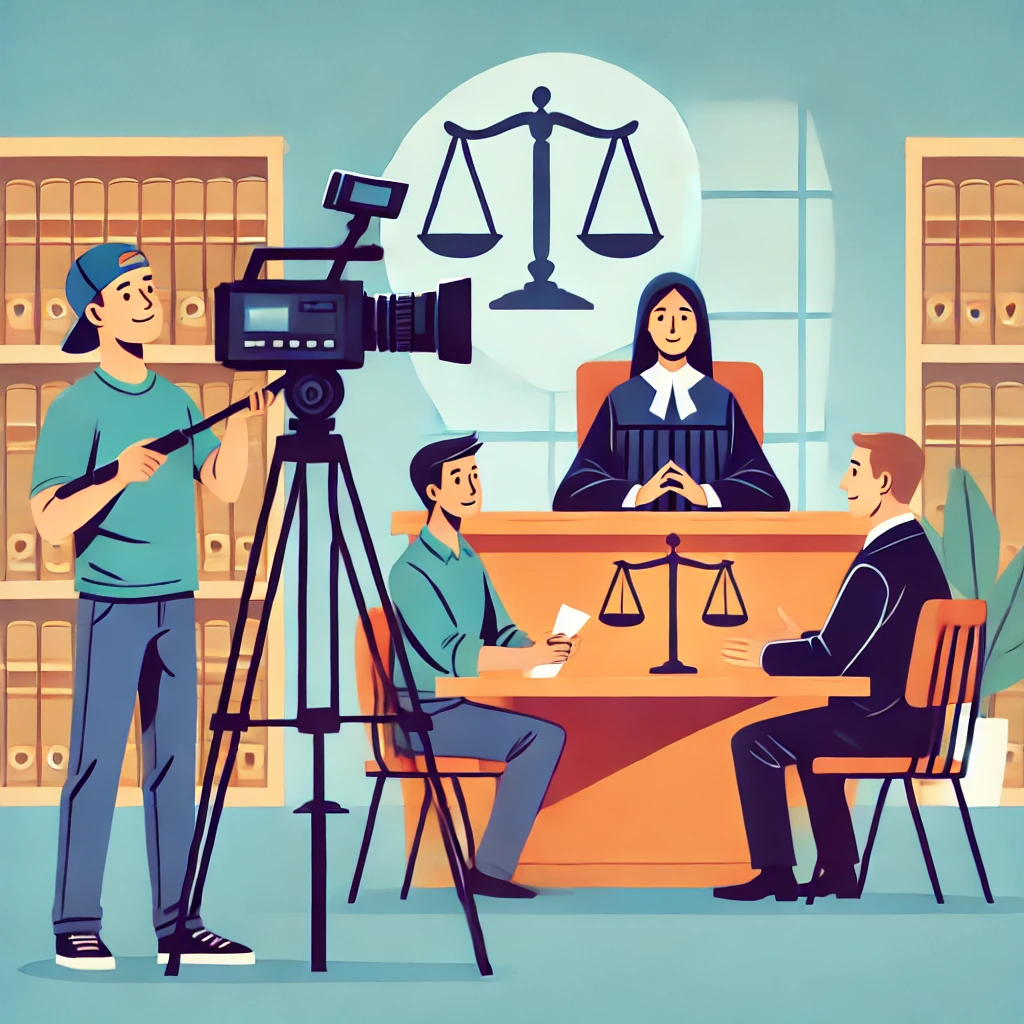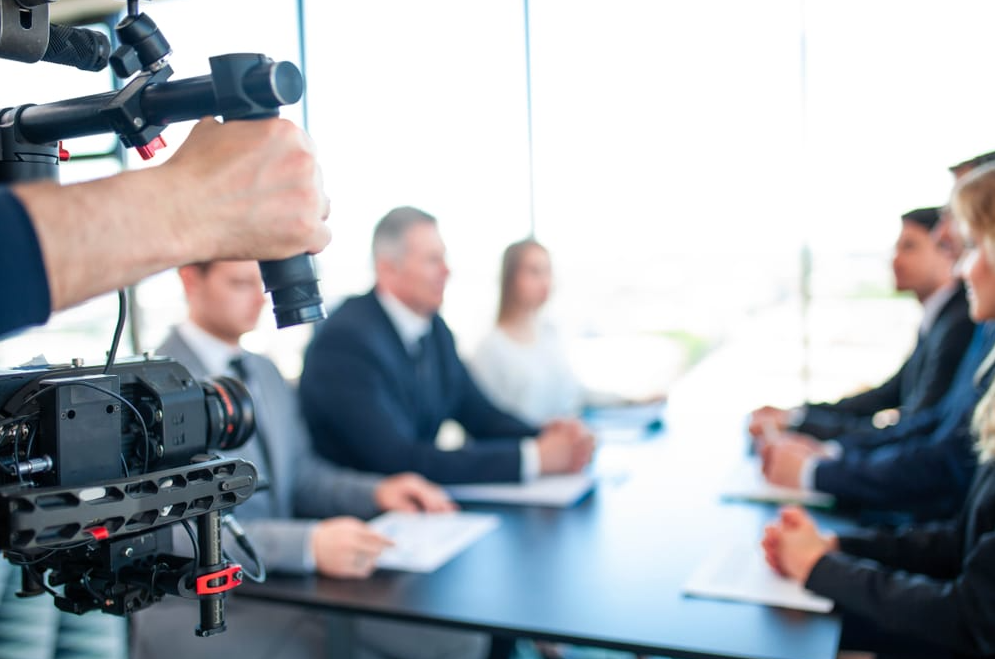Why Legal Videography Is Crucial for Accurate Legal Record-Keeping
In the world of legal process, the precision of record-keeping is vital, and legal videography emerges as a vital device in this context. As we discover the complex benefits of legal videography, one need to consider its implications for the future of judicial integrity and transparency.
Relevance of Visual Evidence
Developing the importance of aesthetic evidence in legal process is extremely important for making certain precise record-keeping and boosting the overall integrity of the judicial procedure. Aesthetic evidence works as a vital tool in documenting occasions, problems, and other essential information that may be important to a situation. Unlike composed accounts, which are prone to analysis and predisposition, visual recordings offer a goal, unalterable depiction of truths as they occurred.


This type of proof can capture a selection of aspects, consisting of witness behavior, ecological context, and physical evidence, every one of which may affect judicial outcomes. By offering a clear and extensive visual story, legal videography removes ambiguity and aids to preserve the credibility of the evidence.
In addition, visual proof can be important in lowering conflicts over factual inconsistencies, as it enables a straight contrast against testimony and various other documented documents. In an era where electronic technology is progressively widespread, the ability to present aesthetic evidence properly can considerably boost the general quality of lawful process. Eventually, the incorporation of aesthetic evidence not just boosts the documents procedure but also strengthens public count on in the judicial system by advertising transparency and accountability.
Enhancing Testament Credibility
The integration of legal videography into court room process significantly boosts the credibility of witness testimony. By recording the subtleties of spoken and non-verbal communication, video recordings offer a more thorough depiction of a witness's demeanor, emotions, and integrity. This visual documentation permits jurors to observe the witness's body movement, faces, and overall comportment, which are crucial components that can affect their understanding of statement trustworthiness.
Furthermore, legal videography reduces the possibility for false impression or distortion of statement that might happen in written records. Viewers can see and listen to the testimony as it was offered, making sure that the context and tone are preserved. This credibility fosters a better sense of trust fund among jurors, that may be much more likely to think testimony that they can witness firsthand.
In addition, the visibility of video footage can hinder witnesses from supplying misleading or exaggerated declarations, as they are aware that their testament is being videotaped. This responsibility reinforces the honesty of the judicial process. Ultimately, lawful videography works as an important tool in guaranteeing that witness statement is not only precisely illustrated but likewise checked out with enhanced trustworthiness by all events involved.
Comprehensive Document Conservation
Comprehensive document preservation is vital for maintaining the stability of lawful process. Lawful videography functions as a critical tool in this process, supplying an exact visual and auditory account of statements, depositions, and various other zero hours in a situation. Unlike traditional written transcripts, video recordings record the subtleties of body movement, tone, and emotion, which are important for comprehending the context and intent behind declarations made throughout legal proceedings.

Furthermore, the capacity to assess video evidence permits lawyers to identify crucial details that might have been forgotten in created documents. By preserving a detailed archive of legal procedures through videography, law office can maintain the highest possible standards of precision and accountability, inevitably adding to a fairer judicial process.
Improving Legal Proceedings
Enhancing lawful process is crucial for enhancing effectiveness and decreasing delays within the judicial system. Legal videography works as a critical tool in accomplishing this goal by giving clear and accurate visual paperwork of court hearings, depositions, and testaments. This innovation permits for real-time recording, guaranteeing that all go right here verbal and non-verbal signs are caught, which can promote quicker resolution of disagreements.
The combination of videography into lawful processes lessens dependence on traditional methods, such as prolonged records, which can be time-consuming to create and assess. learn the facts here now By having actually access to videotaped video, lawyers can quickly reference key minutes, boosting their capacity to prepare and existing instances efficiently. This immediacy additionally helps in the clearing up of statements, decreasing the possibility for false impression.
Furthermore, visual documents fosters an extra interesting court room experience for jurors, aiding them to understand complicated details extra easily. Ultimately, legal videography improves communication among all celebrations included, from attorneys to judges to jurors, thus promoting a more effective judicial process (legal videography). In an era where time is important, accepting this technology is important for the contemporary legal landscape
Admissibility in Court
Precise documents is essential not just for performance but likewise for making sure that evidence is admissible in court. Legal videography offers as a critical device in this process, supplying a trustworthy visual document of testimonies, declarations, and events.
To be considered permissible, legal videography has to follow established procedures, such as correct equipment use, suitable lights, and clear audio capture. In addition, it is important to have actually qualified videographers that understand the lawful requirements surrounding proof collection. The chain of safekeeping have to likewise be kept to stop any insurance claims of tampering or change.
Additionally, lawful videography can boost the persuasiveness of evidence by supplying jurors with a straight sight of the testimony, permitting an extra involved understanding of the case. In summary, the combination of lawful videography right into record-keeping not only supports effectiveness yet also strengthens the integrity and admissibility of evidence in court process.
Conclusion
In final thought, lawful videography plays a critical role in guaranteeing precise lawful record-keeping by providing objective visual paperwork. This technique improves the integrity of testaments, preserves detailed records, and improves lawful process. Additionally, the admissibility of top notch video clip evidence in court additional emphasizes its importance - legal videography. Inevitably, the incorporation of lawful videography into the judicial process promotes openness and strengthens public rely on the integrity of the lawful system.